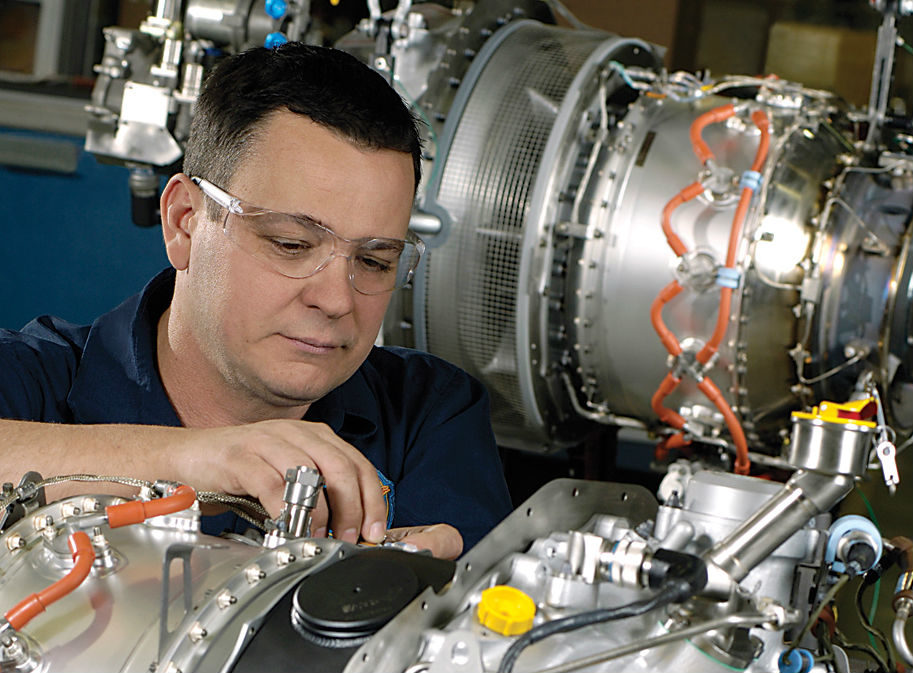Estimated reading time 14 minutes, 32 seconds.
The waters of the mighty St. Lawrence River, the 1,190-kilometre (740-mile) arterial waterway that connects the Atlantic Ocean with the Great Lakes, almost seem to emanate history. Beginning with Jacques Cartier in 1535, the river was the basis for European exploration and settlement of the land that would eventually become Canada, with three of North America’s oldest settlements–Quebec City, Trois-Rivières, and Montreal–founded along its banks. The latter is celebrating its 375th anniversary this year, the last century of which saw it play a key role in the development of the global aviation industry as it became one of the largest aerospace hubs in the world.

And it was because of this that I found myself standing on the south bank of the St. Lawrence earlier this year on an unseasonably mild–but still frigid–morning in Longueuil (a commuter city across the water from downtown Montreal). I was visiting one of the oldest and most familiar presences in aviation. Established in 1928, it will celebrate the production of its 100,000th engine this summer–60,000 of which are still in service, operated by over 12,300 operators in 200 countries.
That company is, of course, Pratt & Whitney Canada (P&WC).
Since the launch of its popular PT6 engine in the 1960s, P&WC has forged business relationships with some 30 aircraft manufacturers. The company builds engines for four main business segments: general aviation, regional turboprops, business jets and helicopters; and also produces commercial auxiliary power units (APUs), including those previously manufactured by Pratt & Whitney in the United States.
The PT6 first established its reputation in general aviation. From Air Tractors to Beechcraft King Airs and from Cessna Caravans to the Pilatus PC-12, the PT6A engine family is the most popular in its class today. Within the rotary-wing industry, P&WC products power aircraft produced by Airbus, Bell, Leonardo, Sikorsky, MD, Avic and Kazan.
P&WC president John Saabas told Skies that this diversity and industry experience give the company a competitive advantage.
“Longevity itself doesn’t mean anything, but the fact that we’ve been able to acquire new customers and develop new products–100 new products in the last 25 years–gives us an edge,” he said. “We have developed products that can cross all markets, we learn from all markets, and we bring that [knowledge] to each segment.”

The company’s sprawling Longueuil headquarters cover 165 acres, and include two main buildings that together span more than 1.23 million square feet. The facilities on this campus include P&WC’s main manufacturing plant, its corporate and customer support offices, and the main engineering centre where about half of the company’s research and development (R&D) is completed.
In addition to its presence in Longueuil, P&WC has its main service centre for engine repair and overhaul in St-Hubert, Que.; its global flight test operations hub and engine assembly in Mirabel, Que.; turbofan R&D and PW300 assembly and testing in Mississauga, Ont.; a specialized machining plant in Halifax, N.S.; PT6 assembly and testing in Lethbridge, Alta.; an altitude testing facility in Ottawa; and, together with Rolls-Royce, it operates the Global Aerospace Centre for Icing and Environmental Research in Thompson, Man.
Developing a range of power
Over the years, P&WC has expanded its engine family to include new offerings targeted at business aviation and regional airlines. Its turbofan and turboprop powerplants are recognized for fuel efficiency and reliability with an emphasis on environmentally friendly performance.
Ranging from 500 to 2,000 shaft horsepower, the PT6A engine family remains one of P&WC’s biggest successes. According to the company website, a variant of the PT6A is in service with more than 6,500 operators in more than 170 countries. More than 41,000 PT6A engines have been built for a range of applications including airlines, general aviation, business, agricultural and utility markets.
On the rotary side, P&WC has produced over 15,000 engines for helicopters, and about 9,000 of those are still in operation on 34 helicopter types. And of the 700 million flight hours accumulated across P&WC’s product line, 55 million of those have been recorded in helicopters.
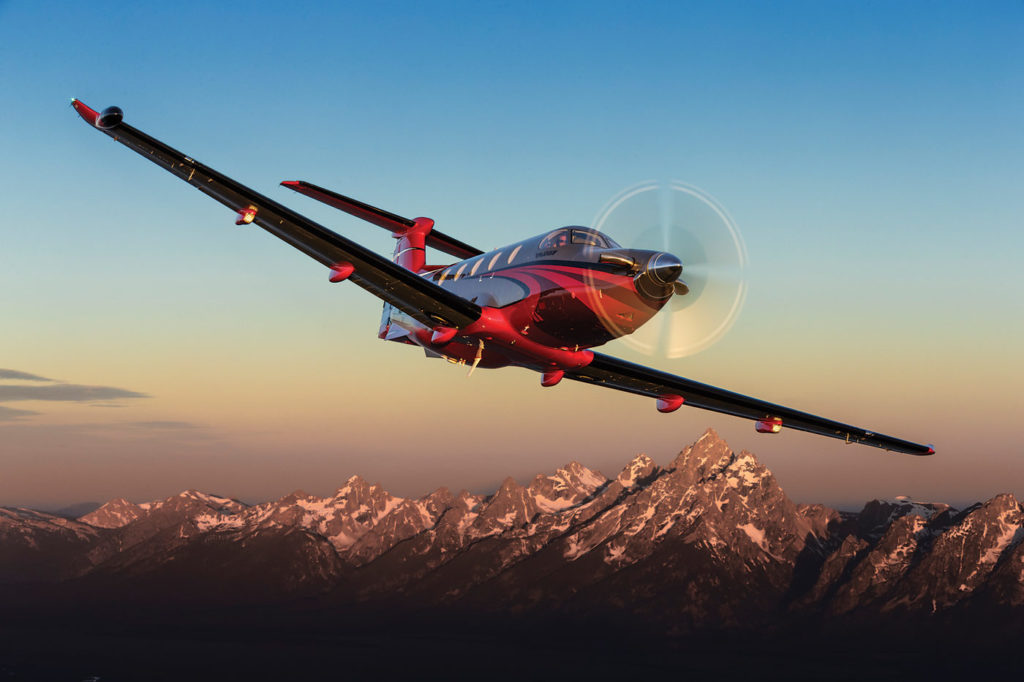
“The helicopter segment is a very important part of our business,” said Saabas. “It’s a segment that actually flies more hours per year than general aviation and business aviation, so it’s one that has more activity through the maintenance cycle.”
The history of the PT6 stretches back to the helicopter industry’s earliest days, too–the first aircraft to have been powered solely by a PT6 was the experimental Hiller Ten99 helicopter.
“The PT6 has stood the test of time in the sense of its reliability and durability,” Tim Swail, P&WC VP of customer programs, told Skies. “It has very good features from a FOD [foreign object debris] tolerance and those perspectives, it fits into many configurations and we’ve continued–especially on the helicopter side–to insert material and component, manufacturing and technologies into the product to enable us to grow the power and improve the performance. We’ve then matched that with the evolution of the control system.”
Committing to innovation
P&WC estimates that it spends about C$500 million each year on R&D across all business segments. Over the last 10 years, it claims to have invested more than C$3 billion in developing new products and technologies.
“We’ve never stopped investing simply because it’s not a good year [in terms of revenue],” said Irene Makris, P&WC VP of marketing for helicopter engines. “We’re always looking at the future, always working with our OEMs, our operators, taking feedback and looking at developing the next engine that’s going to meet their needs–and sometimes we’re actually telling them what we have and where we need to go, and they actually will look at [building] the platform around our engine.”
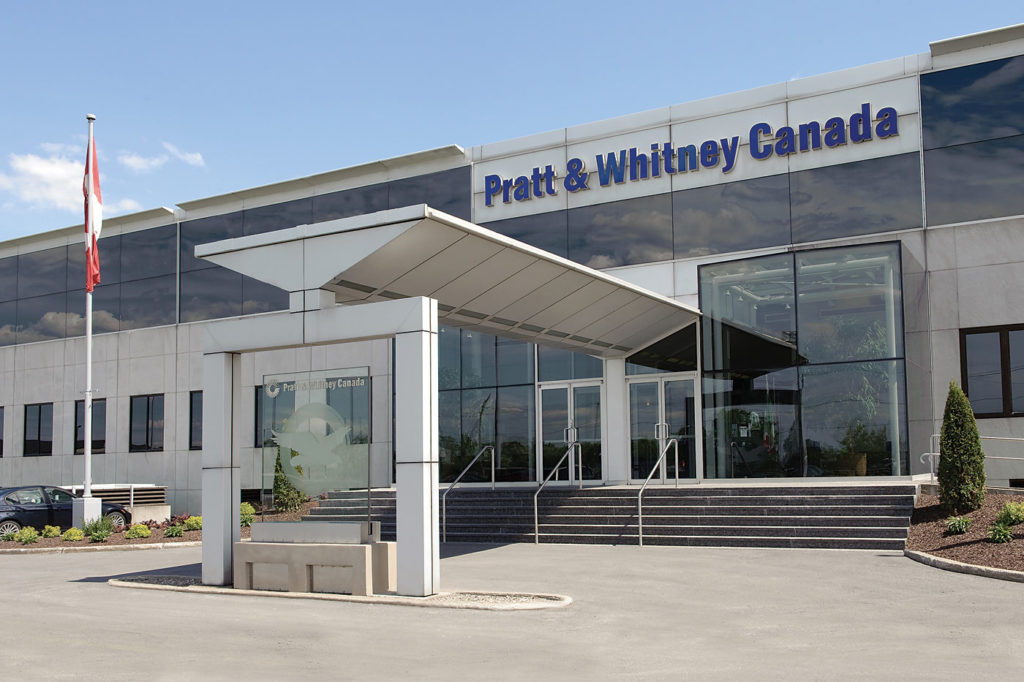
To address future requirements, P&WC is currently developing a new engine family that will produce power in the 1,400- to 2,200-hp range.
“The top end of that is the one place we don’t play; the bottom of that is to replace our own products with more efficient engines,” said Saabas.
Makris said the company’s R&D department has already completed successful tests of new technology for the family, and has shared its progress with customers. Although it was reluctant to reveal too many details about programs still in development, P&WC did say that technology from its PurePower PW1000 and PW800 turbofans was being integrated into turboshaft engines on the drawing board.
Green focus
While there continues to be industry pressure to develop engines that provide more power and greater efficiency, there is also an increasing focus on reducing their environmental footprint. To this end, P&WC has partnered with several leading Canadian universities to develop green technology, with different projects focusing on reducing emissions, noise, waste, and the use of certain chemicals and materials in the manufacturing process, and favouring suppliers who share the company’s sustainability values.
In terms of green fuels, P&WC has been exploring the use of biofuels for decades, and believes their use will increase as the infrastructure to produce them is developed, and that with the right increase in scale, sustainable biofuel could be used by all commercial aircraft on a routine basis in five to seven years.
“We’ve demonstrated hybrid fuels on all our engines,” said Saabas. “The bigger problem is you need to have aircraft and aircraft fuel systems, and a whole distribution network around alternative fuels, to make it a viable thing long-term. But our engines can tolerate biofuels. All you really need to do is do the maturity compatibility, and make sure the fuel flows are in line with the calorific content of the fuel. So you need a bit more fuel, because there’s less energy in the fuel to get the same power.”
And, as part of its push for greater production efficiency, P&WC has invested C$80 million in a Centre of Excellence for Advanced Manufacturing in Longueuil that features three advanced manufacturing cells, as well as C$60 million in Halifax for another two.
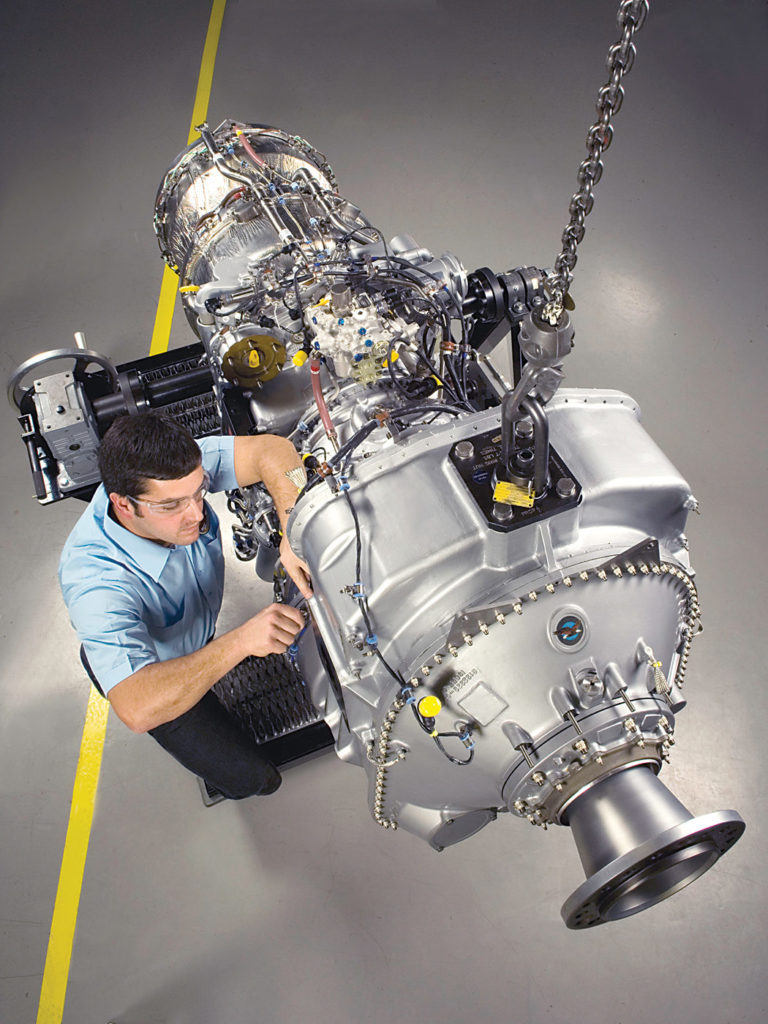
Each cell is home to several robotic arms–similar to the type found in high-tech automobile production facilities–that machine parts as they work their way along the line. The level of precision of these cells is such that they achieve tolerances of less than one-fiftieth of the diameter of a human hair, resulting in a high-quality product with zero non-conformance–and therefore less waste.
Supporting the product
Out of 9,000 employees around the world, P&WC has 2,000 working in customer service–and the emphasis it places on supporting its products is something in which it clearly takes great pride.
“We make sure that we are where our fleets are flying and where our customers need us,” said Makris. “Whether it’s a DOF [designated overhaul facility], a service centre, training school, or parts distribution centre, we strategically locate to make sure that we’re in the right place.”
To that end, P&WC has over 30 company-owned and -designated overhaul facilities around the world; seven parts distribution centres; over 100 field support representatives (FSRs); 100 mobile repair team techs; over 850 rental/exchange engines covering 120 configurations; 13 customer training facilities in seven countries operated through FlightSafety International; and fully integrated aftermarket support at two Customer First Centres (in Longueuil and Singapore) that provide 24/7 coverage for aircraft on ground (AOG) and critical emergency services and technical/maintenance consultation.
Swail said the company is currently focusing its support on tailoring solutions to operators’ individual needs, as well as reducing costs.
“We continue to evolve, but in the last two years we’ve put out the proof points that are showing our customers that we’re willing to adapt to their specific business needs, and we’ve already done a lot,” he said.
A key driving force within P&WC’s support division at the moment is to move operators towards a planned maintenance environment, offering them greater predictability in their maintenance costs. “The next best thing to no maintenance is planned maintenance,” said Saabas.
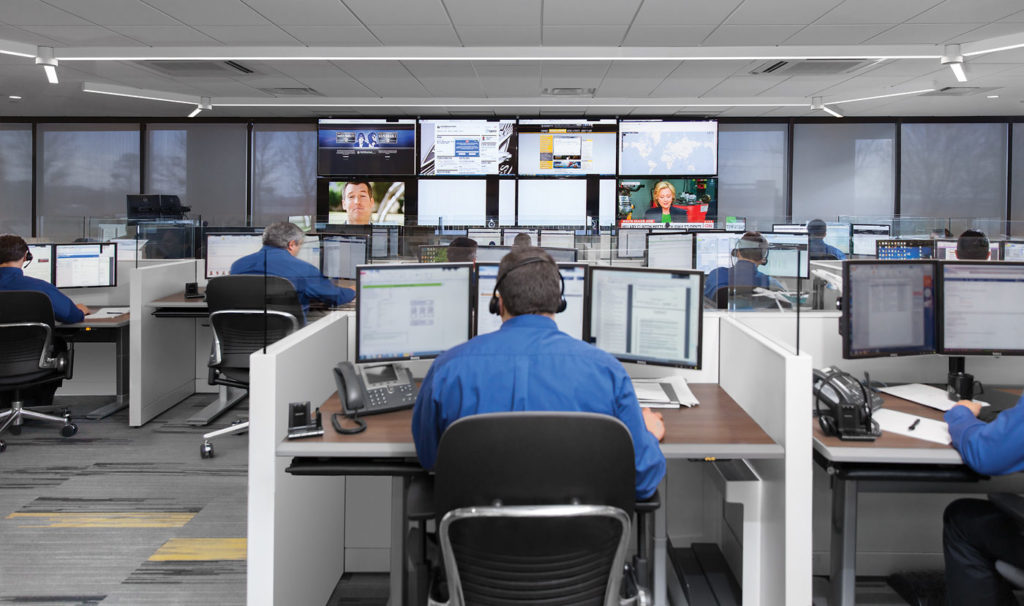
It has launched a suite of 30 service offerings under the “P&WCSMART” program, which includes fleet maintenance programs across all product lines as well as solutions specific to certain engines. In addition, P&WC offers pay-by-hour maintenance plans for corporate operators and fleets. More than 10,000 engines are enrolled in these programs company-wide.
Among the diagnostic, prognostic and health management systems included within the program is P&WC’s new Flight Acquisition Storage and Transmission (FAST) system. The FAST system automatically captures and analyzes a wide range of more than 80 engine and aircraft parameters and provides hands-free cellular transmission from the aircraft to P&WC. The results are then emailed directly to the operator within 15 minutes of the engines shutting down. The system is already in more than half of the Bombardier Q400 fixed-wing fleet, and Swail said P&WC is looking to expand it into other parts of the market.
“It’s really bringing the HUMS [health and usage monitoring systems] experience and beyond that to the engine,” he said. “It’s getting very good customer response … and we’ll continue to make it available to other applications we have out there.”
Another tool that will soon be at the disposal of maintenance technicians is P&WC’s oil analysis program. Currently undergoing a customer trial across 3,100 engines, the program is billed as a next-generation solution for preventative maintenance. The system detects microfine metal particles in oil, allowing early identification of wear of individual oil-wetted components such as gears, bearings and seals.
“We’re able to detect [at] minimum 100 hours sooner that the traditional SOAP [Spectrometric Oil Analysis Program],” said Makris. “And this is not going to be reserved just for us–we’re sharing it with the industry, because safety is all of our responsibility.”
The company expects the technology to be mature in the next 18 to 24 months.

Finally, the manufacturer is making strides in software support. Last year it rolled out MyP&WC Power–a new customer service portal, optimized for use from any device, that offers users the ability to manage almost any interaction with the manufacturer, from accessing technical publications and online tutorials, to ordering parts and submitting hours for maintenance programs.
Then, in November, it launched P&WC Onsite–an HD video collaboration system that essentially functions as a beefed-up and more secure version of Apple’s FaceTime. It allows a customer with a maintenance issue to show the problem area via a live video link to a P&WC representative for advice–rather than having to wait for them to arrive in person. The technology even allows for a connection with a borescope through an adapter.
“Let’s say they want us to sign off a repair, and we need to give them a letter to help their local authority to say, ‘This is outside the manual, but it’s OK,’ ” said Swail. “Now we have the detailed decision record instead of a paragraph, I’ve got a video image which is part of the record–and you can help make decisions faster. It’s just another way we’re trying to make sure we stay close to the customer and keep our reach at the most modern level.”
And, according to Saabas, it’s this drive to constantly improve its support–and the quality of its people–that are the keys to P&WC’s success. “The engine is very important, technology is very important, but it’s new once and used forever,” he said. “I think our support is our biggest advantage. Support comes down to the people you have, the relationships you have, and the availability. And the one comment we always get is that our people are great.”
In an ever-changing industry landscape, P&WC has managed to stay on the leading edge of engine performance and customer support for almost 90 years. And, as it looks ahead to its century, its continued focus on innovation make its future look just as bright as its illustrious past.
Editor-in-Chief of Vertical magazine, Oliver Johnson has been covering the global helicopter industry since joining MHM Publishing in 2012. Follow him on Twitter @orjohnson_
